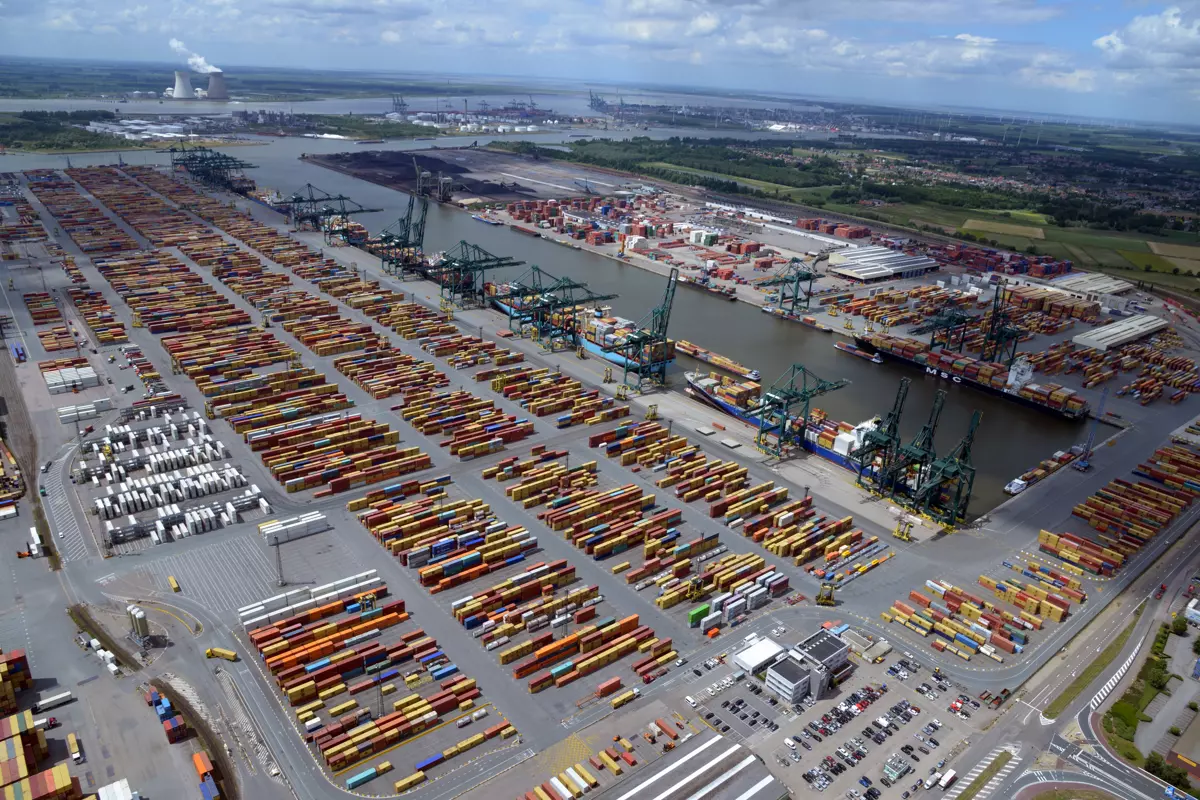As the UN’s International Maritime Organization (IMO) seeks to halve carbon emissions from the shipping sector by 2050, DP World in Antwerp continues to be one of the greenest container terminals in the port of Antwerp according to its latest sustainability report.
The ultra-modern multimodal terminal has reduced its CO2 emissions by 28% since 2019, which represents an overall 51% reduction since 2013, much of which has been due to investment in hybrid straddle carriers and Automated Stacking Cranes (ASCs), which are also increasing capacity.
The terminal runs on 100% green energy, and it has avoided 187,379 truck visits in the last two years due to night openings. These initiatives have also reduced nitrogen, sulphur dioxide, and particulate matter emissions.
DP World in Antwerp produces its unique sustainability report every two years to ensure it stays on track while providing full visibility to its customers and stakeholders. The latest report, which was delayed by a year due to the pandemic, reveals some of the innovative technology led solutions that have allowed it to remain a frontrunner for the sector in its aim to become net zero.
Currently contributing 3% to all emissions, the shipping sector has been singled out as an important partner in helping to reach global emission reduction goals. The industry has set itself a goal to reach 40% reduction in carbon output compared to 2008 level by 2040, and to halve it by 2050.
With those ambitions in mind, one of DP World’s most impressive achievements is the amount of electricity it is generating on site in Antwerp, which accounted for 74% of the energy it used in 2021. This is achieved through its unique biogas plant (59%) and its on-site wind turbines (15%). The shortfall is purchased from a local green energy supplier, but the firm aims to reduce this to zero as it becomes 100% self-powered in future.
It has also invested heavily in more energy efficient technology, with more expensive hybrid and electric equipment being purchased as part of its commitment to its environmental ambitions. It now has a total of 43 hybrid straddle carriers on-site and 10 electric ASC modules, with two more expected to be operational by the end of 2022 and a plan to add eight more by 2024.
These ASCs perform fully automatic handling of the containers allowing more containers to be stacked, both higher and closer together, saving vital space and using almost 50% less energy on the landside to process a container than a straddle carrier.
DP World in Antwerp is also helping its customers improve their carbon footprint by offering multimodal transport options that reduce the number of truck journeys required. Its rail hub can handle six trains up to 750m in length simultaneously and administers up to 40 trains each week, with flexible direct connections to every major European industrial region.
The port is also connected to the 1,500km-long Belgian waterways and to the pan-European river and canal network, resulting in a substantial 35% of all cargo to/from DP World in Antwerp being transported by barge.
In a further demonstration of their commitment to their sustainability goals, the team at Antwerp also recently moved their operations into a new, eco-friendly office, which celebrated its official inauguration in April this year. The energy-efficient building uses concrete core activation for cleaner heating and 100% renewable electricity.
Rashid Abdulla, CEO of DP World Europe said: “Electrification of terminals is the way to a zero-emissions future. Our electricity demand in Antwerp is met entirely by locally produced and green energy from our own windmill, biogas plant, and locally purchased green power. This significantly reduces the CO2 emissions of our operation.
“We have also invested heavily in our multimodal infrastructure, and we have introduced electric and hybrid technology. Like electric cars, these cost more than the fossil fuel alternatives, but we believe this offers a stronger long-term investment and also helps with our strategy to increase capacity by 30% at the terminal by 2026.”
DP World has more than 97,000 employees working at its operations in over 69 countries. It is the leading provider of smart logistics solutions, enabling the flow of trade across the globe. The firm has set itself ambitious sustainability goals across its global business, committing to a 28% reduction of carbon footprint by 2030 and net zero carbon emissions by 2040.
Earlier this year it produced its first ever ESG report, which recorded an 18% renewable electricity share at Group level, representing a 5.6% increase from 2020 to 2021. It achieved a 13.30 emission intensity (kgCO2e/ModTEU) from its Ports and Terminals business, a reduction of 9% from the previous year.
Abdulla added: “We are very happy with the progress we have made globally and at our European terminals, but we know there is still a long way to go and we are aware of a number of new solutions coming to market, such as alternative fuels and our very own intelligent High Bay Storage (HBS) system “Boxbay”, which we are looking forward to incorporating into our business to allow us to continue to make progress towards our ambitious net zero goal.”





